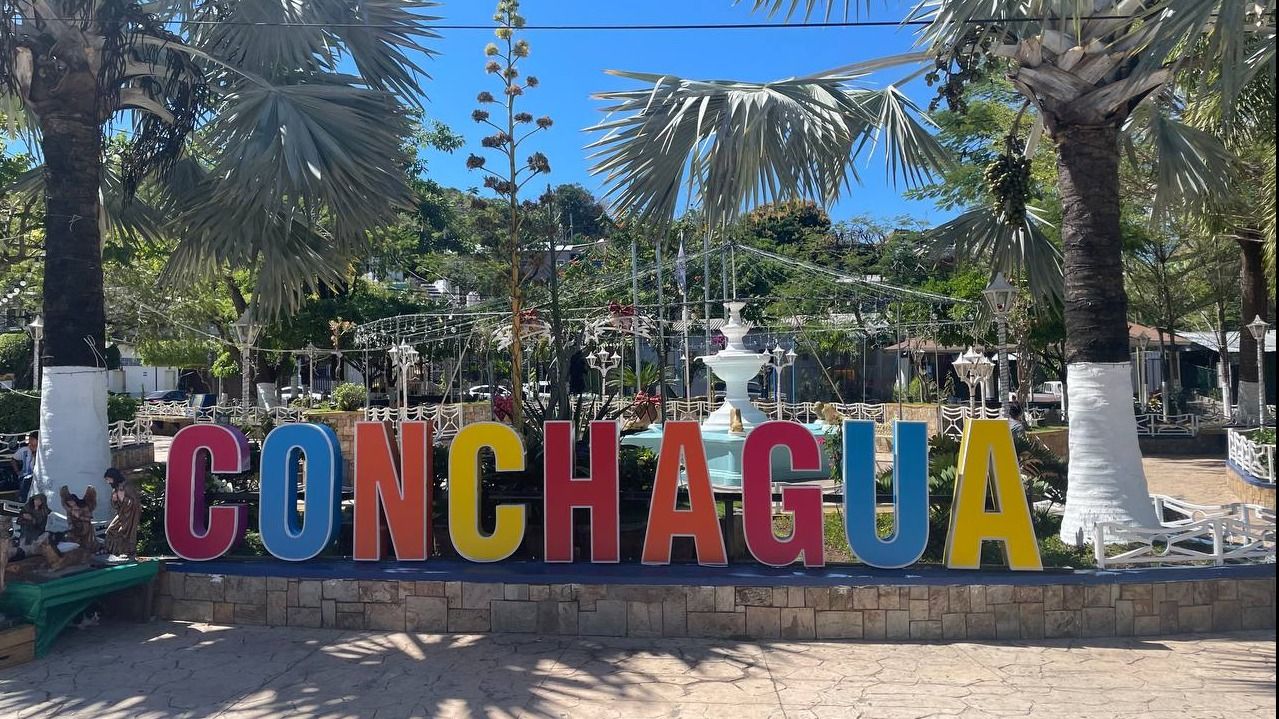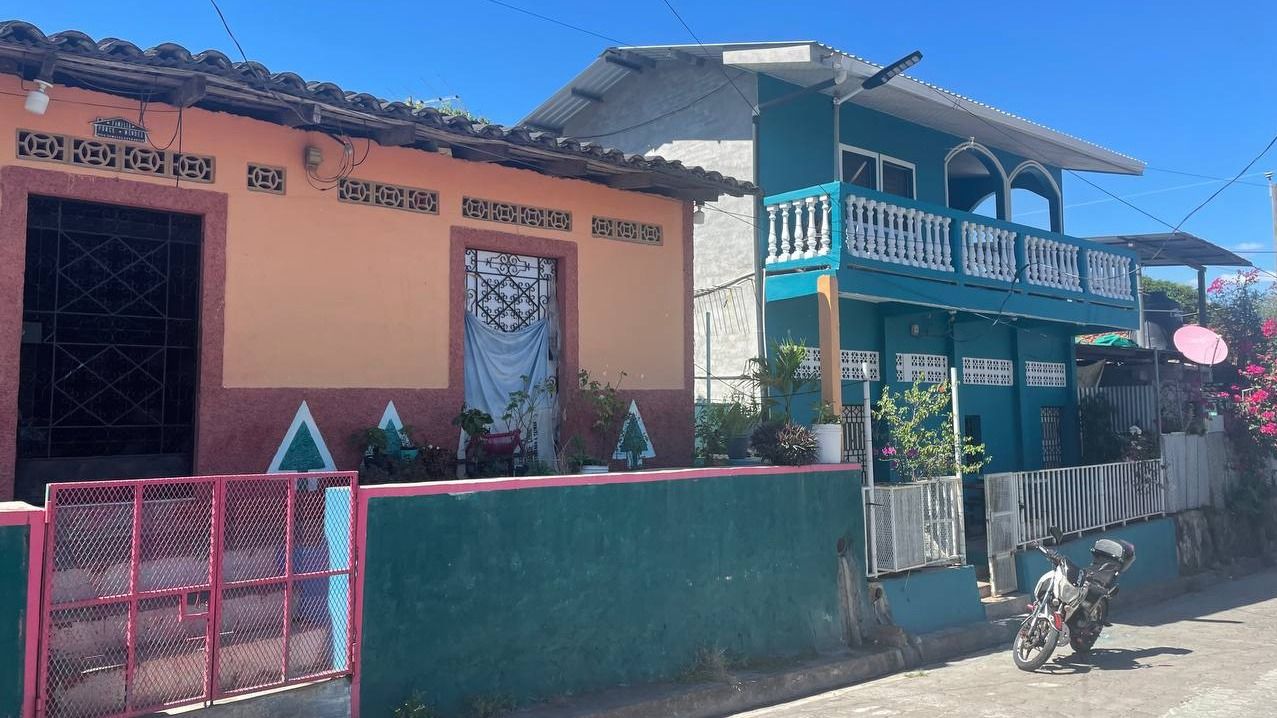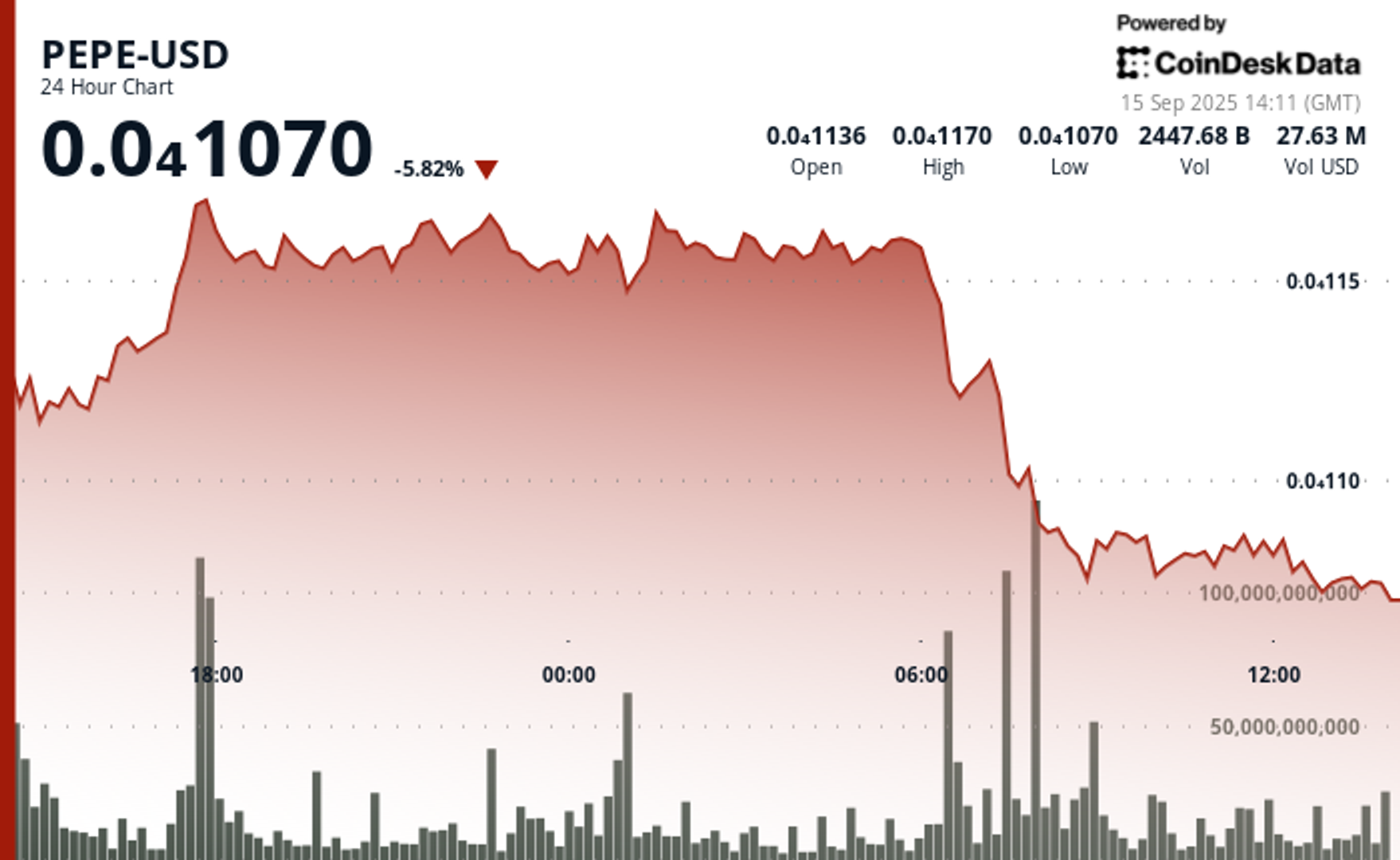Uncategorized
El Salvador Dispatch: Searching for Bitcoin City, the Modern El Dorado

This article is part of a four-piece series on El Salvador. You can find the previous dispatch, a story on Bitcoin Berlín, here.
Bitcoin City sounds like a modern El Dorado — a dreamlike enclave in the jungle, a 21st century utopia.
Announced by El Salvador President Nayib Bukele in 2021, the metropolis will supposedly be raised at the base of the Conchagua volcano. Renderings of the project from May 2022 show a circular shape, like the Bitcoin logo, and a structure painted in gold.
Visiting El Salvador this month, I was curious to see Bitcoin City for myself, or at least try to spot signs of construction.
It’s a four-and-a-half hour drive from San Salvador to Conchagua. The volcano sits on the easternmost side of the country, on the coast, by the Gulf of Fonseca. You can see Nicaragua and Honduras from the top of it, as well as small islands like Tiger Island, Conchagüita and Meanguera Island. It’s a beautiful place, but terribly humid, and hot. It was 35 degrees Celsius (95°F) when I arrived at noon in late-January.
Bitcoin City faces southeast according to plans shared by Bukele, meaning that it should look toward the water. But Google Maps shows no roads on that side of the volcano, only the Conchagua Forest and virgin beaches like Playa El Flor (flower beach). So I drove to the little village of Conchagua, on the northern side.
What I found in Conchagua
Conchagua is a tiny village, and it’s adorable. My immediate impression was that I’d fallen back in time, like to Portugal in the 1950s, perhaps. Droves of school children in white uniforms rushed through the streets, making their way back home for lunch after being dropped off by colorful buses.
As in most Latin American cities, the central square displayed the town’s name in bright block-letters: CONCHAGUA. There is a white fountain behind, and Christmas decorations were still up despite festivities being long over.

Opposite from the square stands a gorgeous, white colonial church. Its patron saint is Santiago Apóstol; villagers refer to the parish by that name as well. It’s hard to tell when construction began, but it finished in 1693, which makes it the oldest church in El Salvador, and a prized tourist attraction.

Be that as it may, there didn’t seem to be other foreigners when I arrived, and my presence drew a few stares. It’s a quiet town; outsiders stand out. It’s hard to say how many people live there — the mayor’s office didn’t have access to the census taken in 2023 by the Salvadoran central bank — but I’d be surprised if it were more than a couple thousand.
Wikipedia says 37,400, based on a 2007 survey, yet that figure is for the entire municipality of Conchagua, which takes in a half-dozen other villages around the volcano, and even then, it feels like an overestimation.
At the mayor’s office, I was politely greeted by Margarito García, who has worked for the office for 15 years. When I asked about Bukele’s plans to build Bitcoin City on the volcano, García shook his head.
“These are only words,” he said.
There have been no signs of construction nearby, he added, nor have government officials been sighted. I wasn’t the first person to ask. Tourists — French and Slovak, he remembered — had come searching for Bitcoin City in the last few months. But he saw the attention brought to Conchagua as a positive for the local economy.

García mentioned that an airport was being developed close to Loma Larga, about 30 minutes southwest of Conchagua. He was referring to the “Pacific Airport,” an initiative proposed by Bukele as far back as 2019 to boost tourism in El Salvador’s eastern region and relieve the country’s existing international airport of some of its congestion.
The Legislative Assembly approved the airport’s construction in 2022. The project will cost $328 million and initially service between 300,000 and 500,000 passengers per year. Construction is expected to begin in 2025.
Plans for Bitcoin City
The project is notable because Bukele’s plans for Bitcoin City do include an airport, as well as a port, rail services, commercial and residential zones, restaurants, and entertainment venues. Could the Pacific Airport be a first step to building the metropolis?
Possibly.

“In Bitcoin City, we will have mining, agriculture, culture and sports. When we are gone, this will endure, and everyone will be able to see the city,” Bukele said back in 2021, when he announced the project.
“We will have no income tax, forever. No profit tax, no property tax, no hiring tax, zero municipal taxes and zero CO2 emissions. The only taxes you will have in Bitcoin City is VAT, half of which will be used to pay the municipality’s bonds and the rest for public infrastructure and city maintenance,” he added.
The Conchagua volcano’s geothermal energy was envisioned as Bitcoin City’s primary power source, a nice environmental touch considering the environmental reputation of the bitcoin mining industry.
Bukele said Bitcoin City’s construction will be funded via a $1 billion bitcoin-backed tokenized bond, called the Volcano Bond, originally scheduled for issuance in 2022. The bond received regulatory approval in December 2023 and was supposed to launch in the first quarter of 2024, according to El Salvador’s Bitcoin Office. But the Salvadoran government has remained silent on the matter since.
“I don’t know when we’ll have some news on that,” Stacy Herbert, director of the Bitcoin Office (which acts as the government’s marketing arm for all things crypto-related) told me back in December when I asked her for updates on Bitcoin City and the Volcano Bond. “But the foundation has been laid for everything.”
Driving to the volcano
I was quite determined to go up the volcano and lay my eyes on the Gulf of Fonseca. I wanted to get a sense of the view that residents of Bitcoin City may enjoy in the future.
The villagers didn’t seem to think that my rental car would make it. It was all dirt tracks; I would need a four-wheel drive, they said, or I’d have to take a shuttle up there.
I gave it a try anyway. Slowly making my way on a bumpy road, I drove eastward, circumventing the volcano, towards another village called Amapalita. On both sides of the track were fields and forests. Every once in a while I’d see the northern side of the volcano break through the foliage.

It wasn’t long before the road got too steep for comfort. I turned around and made my way back to the village. I could have tried another road, which runs along the volcano’s western side, but the day was getting on, and I wanted to reach El Zonte, four hours away, before nightfall.

Assuming the Pacific Airport starts getting built in 2025 (which looks likely) it will have been six years since the moment Bukele first mentioned the airport and the moment construction started.
Bitcoin City, being a vastly larger enterprise, could take much longer than that. There is no guarantee the initiative will ever come to fruition at all. Other such planned cities — like Neom in Saudi Arabia — have faced even greater delays.
Who knows? El Salvador has surprised the world more than once under Bukele. I wouldn’t bet against it.
Uncategorized
PEPE Price Sinks 6% Amid Market Sell-Off as Whales Accumulate

Meme-inspired cryptocurrency PEPE has lost nearly 6% of its value in the last 24-hour period, sliding to a $0.0000107 low even as large investors accumulate.
Trading volumes for the cryptocurrency surged into the trillions of tokens amid the drop, as the token kept failing to find support amid the intense selling pressure. The drop came amid a wider crypto market drawdown, where the broader CoinDesk 20 (CD20) index lost 1.8% of its value.
Memecoins were especially hard hit in the sell-off. The CoinDesk Memecoin Index (CDMEME) dropped nearly 5% over the last 24 hours, while bitcoin saw a drop of 0.8%.
The drop comes just days after altcoin season speculation grew among cryptocurrency circles over the Federal Reserve’s expected interest rate cut later this week, which is expected to be a boon for risk assets.
Data from Nansen shows that over the past week, the top 100 non-exchange addresses holding PEPE on the Ethereum network have seen their holdings grow by 1.38% to 307.33 trillion tokens, while exchange wallets had a 1.45% drop in holdings to 254.4 trillion tokens.
Technical Analysis Overview
PEPE’s price action pointed to a market in retreat, according to CoinDesk Research’s technical analysis data model. The token dropped from $0.000011484 to $0.000010782, with sellers dominating the chart.
Price peaked at $0.000011732 during a resistance test, but volume swelled to 5.5 trillion tokens at that level, before the market ultimately turned lower.
Support showed signs of buckling during the next phase, with the token brushing against $0.000010746. Trading activity intensified again, hitting 7.7 trillion tokens and reinforcing bearish sentiment.
The cryptocurrency’s price whipsawed within a 9% intraday range, a sign that traders remain unsure whether support levels are going to hold.
Disclaimer: Parts of this article were generated with the assistance from AI tools and reviewed by our editorial team to ensure accuracy and adherence to our standards. For more information, see CoinDesk’s full AI Policy.
Uncategorized
Ether Bigger Beneficiary of Digital Asset Treasuries Than Bitcoin or Solana: StanChart

Digital asset treasuries (DATs), publicly traded firms that hold crypto on their balance sheets, have been hit hard in recent weeks as their market NAVs (mNAVs) slid below 1, Standard Chartered’s Geoff Kendrick said in a new report.
Looking ahead, ether (ETH) DATs appear to have the most staying power thanks to staking yield, regulatory clarity, and room to grow, argued Kendrick.
The mNAV ratio is crucial. When it falls, these firms lose the incentive (and sometimes the ability) to keep buying crypto, threatening a key source of demand for bitcoin (BTC), ether and solana (solana).
Kendrick said that the next phase for DATs will be one of differentiation. The winners will be those that can raise funds at the lowest cost, achieve scale that draws liquidity and investor attention, and, crucially, earn staking yield. That last point tilts the playing field toward ether and solana treasuries over bitcoin, which lacks yield.
Market saturation is also at play. Strategy’s success as the flagship BTC treasury has inspired a flood of copycats, nearly 90 at last count, who together now hold more than 150,000 BTC, up sixfold this year, the analyst noted.
But if mNAVs stay below 1, Standard Chartered expects consolidation. For BTC treasuries, that could mean firms like Saylor’s Strategy buying out rivals rather than buying new bitcoin on the open market, a coin rotation, not fresh demand.
Ether treasuries look better positioned. They have been aggressively accumulating, with 3.1% of ETH’s circulating supply purchased since June. The largest player, Bitmine (BMNR) is well-placed to keep adding to its 2 million ETH stack, the report said.
For crypto markets, this matters. DAT buying has been a key driver of bitcoin and ether prices in 2025. But with BTC treasuries facing consolidation pressure and solana treasuries still relatively small, Standard Chartered sees ETH as the likely beneficiary going forward.
Read more: Strategy’s S&P 500 Snub Is a Cautionary Signal for Corporate Bitcoin Treasuries: JPMorgan
Uncategorized
Ethereum Foundation Starts New AI Team to Support Agentic Payments

The Ethereum Foundation (EF) is creating a dedicated artificial intelligence (AI) group to make Ethereum the settlement and coordination layer for what it calls the “machine economy,” according to research scientist Davide Crapis.
Crapis, who announced the initiative Monday on X, said the new dAI Team will pursue two priorities: enabling AI agents to pay and coordinate without intermediaries, and building a decentralized AI stack that avoids reliance on a small number of large companies. He said Ethereum’s neutrality, verifiability and censorship resistance make it a natural base layer for intelligent systems.
Ethereum Foundation background
The EF is a non-profit organization based in Zug, Switzerland, that funds and coordinates the development of the Ethereum blockchain. It does not control the network but plays a catalytic role by supporting researchers, developers and ecosystem projects.
Its remit includes funding upgrades such as Ethereum 2.0, zero-knowledge proofs and layer-2 scaling, alongside community programs like the Ecosystem Support Program. The foundation also organizes events such as Devcon to foster collaboration and acts as a policy advocate for blockchain adoption.
In 2025, EF restructured to handle Ethereum’s growth, emphasizing ecosystem acceleration, founder support and enterprise outreach. The new dAI Team represents a continuation of this shift toward specialized units addressing emerging technologies.
Crapis’s role
Crapis is a research scientist at the EF and will lead the new dAI Team. He said the group will connect its work with both the EF’s protocol group and its ecosystem support arm.
“Ethereum makes AI more trustworthy, and AI makes Ethereum more useful,” he wrote, adding that the team intends to fund public goods and projects at the intersection of AI and blockchains.
ERC-8004 and Trust Standards
The group will build on recent work around ERC-8004, a proposed Ethereum standard that Crapis described as a way to prove who an AI agent is and whether it can be trusted. By offering identity and reputation systems for autonomous agents, the standard is intended to allow coordination without centralized gatekeepers.
Crapis said the team will support new standards and upgrades as they emerge, guided by Ethereum’s values and the “d/acc” philosophy of decentralized acceleration. The goal, he explained, is to ensure AI development remains open and verifiable while giving humans greater agency over how intelligent systems interact with the economy.
Why it matters
For Ethereum, the move signals a growing ambition to anchor emerging technologies beyond finance.
If AI agents begin transacting at scale, demand could grow for settlement rails, reputation systems and standards that run natively on Ethereum. For the AI community, the initiative offers an alternative to centralized platforms that currently dominate AI infrastructure.
“The more intelligent agents transact, the more they need a neutral base layer for value and reputation,” Crapis said. “Ethereum benefits by becoming that layer and AI benefits by escaping lock-in to a few centralized platforms.”
The team has begun hiring and publishing resources, according to Crapis. He said EF intends to work “with purpose and urgency” to connect AI developers with the Ethereum ecosystem and to accelerate research at the boundary of the two fields.
-

 Business11 месяцев ago
Business11 месяцев ago3 Ways to make your business presentation more relatable
-

 Fashion11 месяцев ago
Fashion11 месяцев agoAccording to Dior Couture, this taboo fashion accessory is back
-

 Entertainment11 месяцев ago
Entertainment11 месяцев ago10 Artists who retired from music and made a comeback
-

 Entertainment11 месяцев ago
Entertainment11 месяцев ago\’Better Call Saul\’ has been renewed for a fourth season
-

 Entertainment11 месяцев ago
Entertainment11 месяцев agoNew Season 8 Walking Dead trailer flashes forward in time
-

 Business11 месяцев ago
Business11 месяцев ago15 Habits that could be hurting your business relationships
-

 Entertainment11 месяцев ago
Entertainment11 месяцев agoMeet Superman\’s grandfather in new trailer for Krypton
-

 Entertainment11 месяцев ago
Entertainment11 месяцев agoDisney\’s live-action Aladdin finally finds its stars





